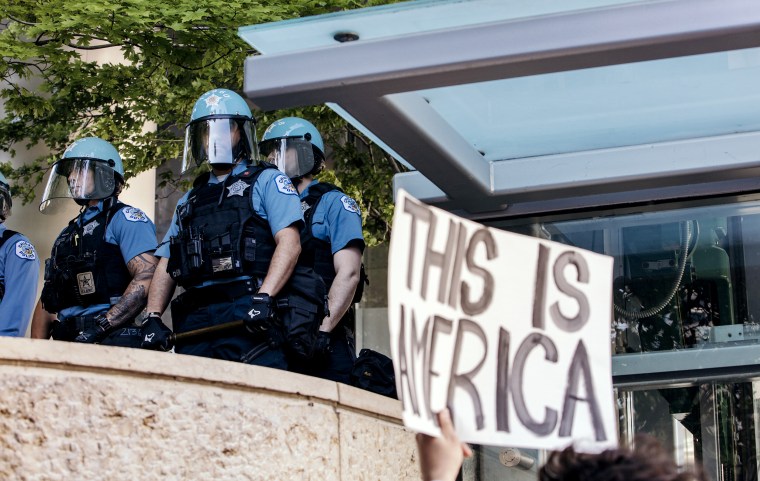Black people in the Chicago metropolitan area experienced the highest rate of police killings in the country from 2013 to 2017, according to a study published Wednesday by Harvard researchers.
Blacks were six-and-a-half times more likely than white people to die at the hands of police in the region that includes Chicago and areas to its west. Death rates among Black people were five times higher than white people in other large metropolitan regions, like the San Francisco Bay Area and New York City.
The study, published in the journal PLOS One, examined reports of more than 5,000 nonaccidental deaths experienced at the hands of police gathered by an independent and privately run citizen science database called Fatal Encounters, established by D. Brian Burghart, journalist and researcher. The database takes media accounts and cross-checks against public records to independently verify mortality rates. 2017 was the last year complete information was available when the project began in May 2019.
"No national, publicly funded data system has accurately tracked the number of people who die during contact with police, but these deaths are public health data and can be counted," researchers Gabriel Schwartz and Jaquelyn Jahn, of Harvard's T.H. Chan School of Public Health, wrote in the introduction to the report. They point out that the Black Lives Matter movement has "drawn renewed attention to fatal police violence as an urgent public health and racial justice problem" for the last decade.
"Police-related deaths have distinct causes, distributions, and consequences for population health from other forms of violence and currently number in the thousands every year," Schwartz and Jahn write. "Men, racial/ethnic minorities, young people, and those living in economically disadvantaged areas are particularly at risk, especially those at the intersection of these social stratifications."
Fatal Encounters analysis of data, the authors said, "showed police accounted for more than 1 in 12 of all homicides of adult men between 2012 and 2018."
The study also found high levels of racial inequity in policing in smaller cities like St. Louis; Milwaukee; Trenton, New Jersey; Dayton, Ohio; Reno, Nevada; Asheville, North Carolina; and Columbus, Ohio, where Black people were more than four times more likely to die in police encounters than white people. Police were a little more likely to kill Latinos than whites in the West and Southwest, The researchers found. In parts of Colorado, Arizona, California and New Mexico, Latino death rates were 1.25 to 1.5 times higher.
Nationally, across the 382 metropolitan areas studied, researchers found that fatal encounters with police were three times more likely for Black people than whites overall.
The study doesn’t examine why certain areas are more likely than others to record higher rates of police killings. Schwartz and Jahn, the authors, told NBC in an email exchange that the reasons most likely have to do with the historical roots of racism in the United States and the ways that police have been used as tools of racial social control.
“This is a question we hope researchers, politicians, and police departments seriously ask themselves,” Schwartz and Jahn wrote. “Our analysis points to which metro areas have the most work to do.”
The study was released nearly one month after the May 25 killing of George Floyd while in Minneapolis police custody. His death was captured by a cellphone video that showed one officer, Derek Chauvin, kneeling on his neck for roughly eight minutes.
Floyd’s killing highlighted inequalities in the criminal justice system and prompted widespread protests demanding racial justice and systemic change in law enforcement.

